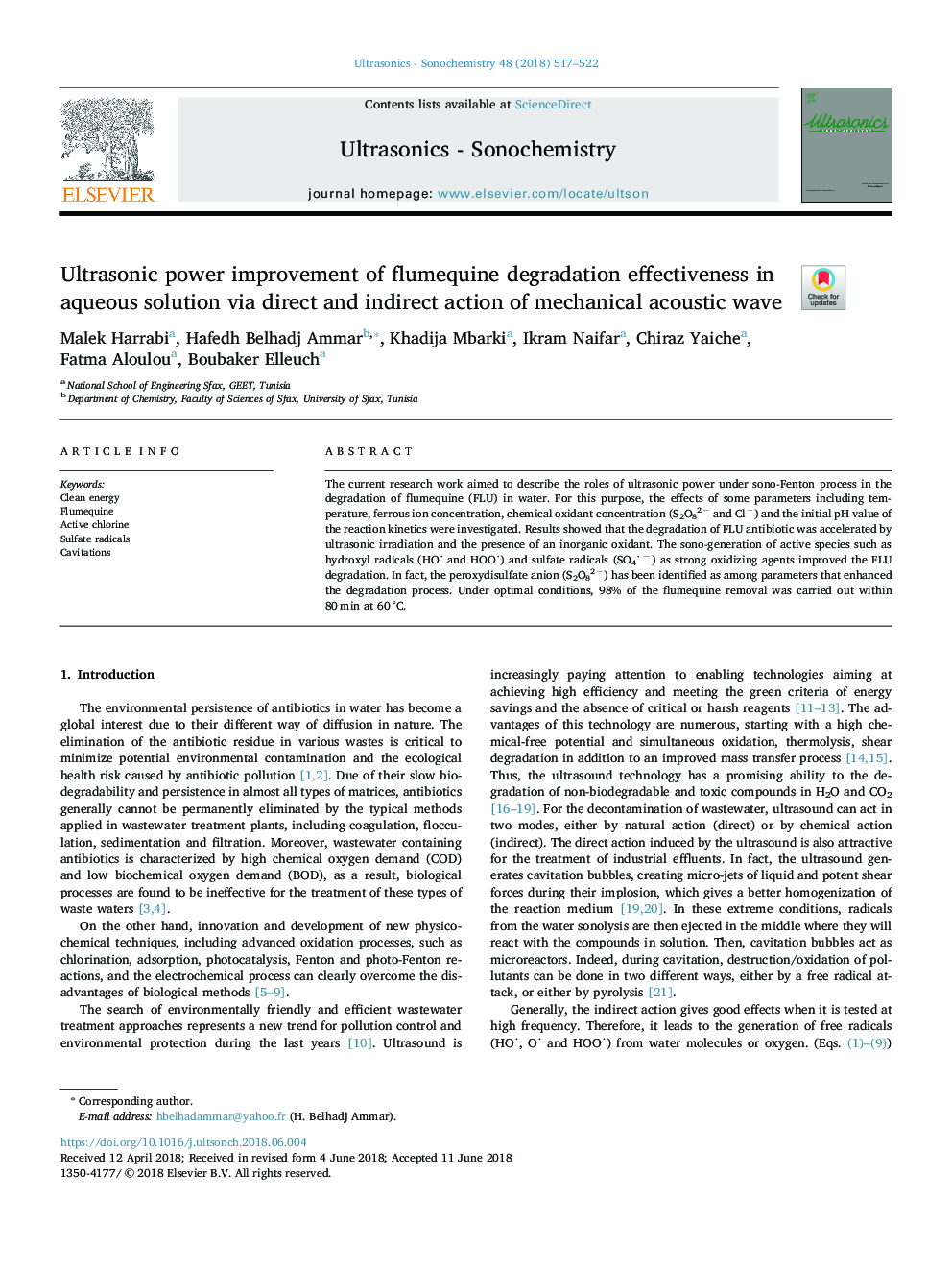| Article ID | Journal | Published Year | Pages | File Type |
|---|---|---|---|---|
| 7702280 | Ultrasonics Sonochemistry | 2018 | 6 Pages |
Abstract
The current research work aimed to describe the roles of ultrasonic power under sono-Fenton process in the degradation of flumequine (FLU) in water. For this purpose, the effects of some parameters including temperature, ferrous ion concentration, chemical oxidant concentration (S2O82â and Clâ) and the initial pH value of the reaction kinetics were investigated. Results showed that the degradation of FLU antibiotic was accelerated by ultrasonic irradiation and the presence of an inorganic oxidant. The sono-generation of active species such as hydroxyl radicals (HO and HOO) and sulfate radicals (SO4â) as strong oxidizing agents improved the FLU degradation. In fact, the peroxydisulfate anion (S2O82â) has been identified as among parameters that enhanced the degradation process. Under optimal conditions, 98% of the flumequine removal was carried out within 80â¯min at 60â¯Â°C.
Related Topics
Physical Sciences and Engineering
Chemistry
Chemistry (General)
Authors
Malek Harrabi, Hafedh Belhadj Ammar, Khadija Mbarki, Ikram Naifar, Chiraz Yaiche, Fatma Aloulou, Boubaker Elleuch,
